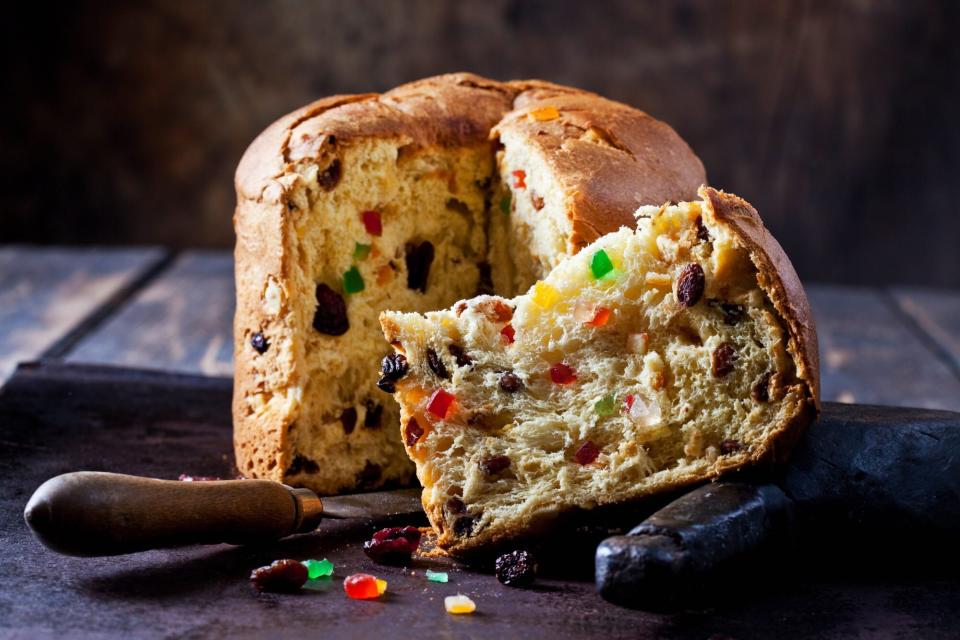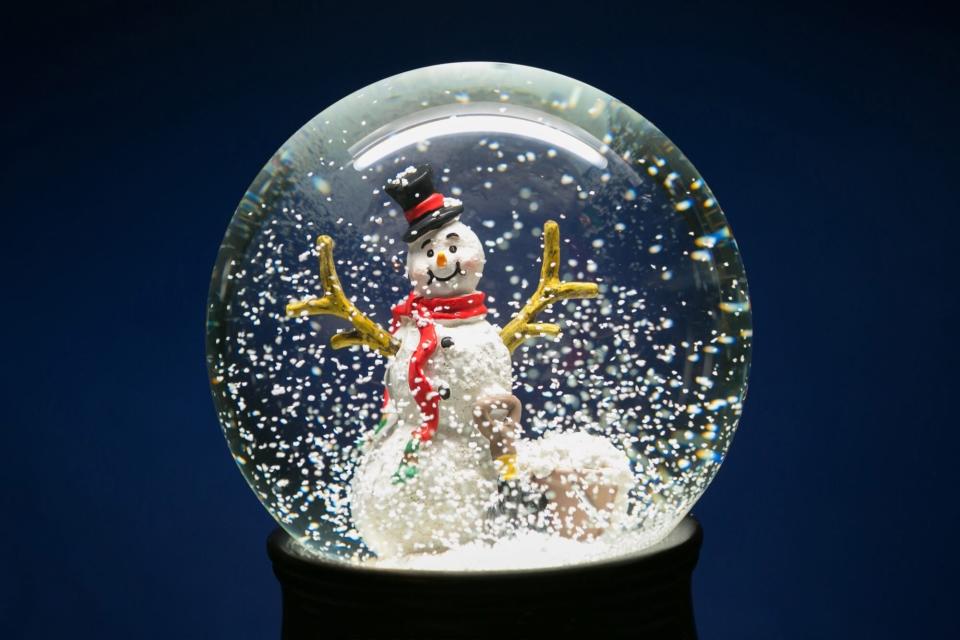The True Origins of Fruitcake, the First Store Santa and More Christmas Facts You Maybe Didn't Know
Dotdash Meredith and Yahoo Inc. may earn commission or revenue on some items through the links below.

Getty Images/Westend61
You know Dasher and Dancer and Prancer and Vixen ... but do you know the origins of eggnog? Of "Silent Night"? Of Santa Claus himself?
Brian Earl does. The Silicon Valley resident has hosted the popular Christmas Past podcast since 2018, telling delicious tales of the meanings behind Christmas traditions to a worldwide audience.
Recently, Earl released a book of the same name ($22.49), which expands upon all the bite-sized stories shared on his podcast. Here, just in time for the holiday, five fun facts gleaned from the volume.
1. Fruitcake dates back to the Romans
In Christmas Past, Earl discusses the origins of the love-it-or-hate-it holiday treat, explaining it was first conceived as almost an "energy bar" for Roman soldiers heading into battle, consisting of barley mash, pomegranate seeds, raisins and pine nuts, formed into a cake shape.
2. The first store Santa Claus appeared in 1890
Though many may associate in-store Santas with Macy's and Miracle on 34th Street, it was James Edgar, owner of Edgar's Department store in Brockton, Mass., who "began making appearances in his store dressed as Santa starting in 1890," Earl writes.

Getty Images/Westend61
RELATED: See Stars Meeting Santa in 2022
3. Christmas trees were lit by candles — with dangerous results
Earl dedicates a chapter to Christmas lights, recounting how people would illuminate trees with candles — a tradition some credit to Martin Luther but in reality started nearly a century after his death, closer to the 1600s.
Earl cites an 1896 Good Housekeeping article that instructs readers to "have a bucket of water and a sponge fastened to a stick of sufficient length to reach the top of the tree near at hand, in order to extinguish any flame which may arise."
Christmas tree fires were so common, in fact, that some insurers wouldn't cover them.
But by the early 1880s, Thomas Edison's invention of the lightbulb slowly changed the way people lit their trees, for the better.
Never miss a story — sign up for PEOPLE's free daily newsletter to stay up-to-date on the best of what PEOPLE has to offer, from juicy celebrity news to compelling human interest stories.

Getty Images/EyeEm
4. Gift wrap was created by accident
In 1917, two brothers running a stationery store in Kansas City ran out of the tissue paper used to wrap gifts. In looking for a quick substitue, one brother grabbed some of the "brightly colored paper sheets imported from France that they had planned on using as the inner linings of their envelopes," Earl writes. "He priced the sheets at 10 cents a pop, and the stuff just flew off the shelves."
5. The snow globe was born by accident in Austria
Earl traces the history of the snow globe to Austrian man Erwin Perzy, who created and sold surgical instruments. In trying to make a better lightbulb for operating rooms, Perzy crushed glass into a "fine glitter," Earl writes, "creating thousands and thousands of tiny reflectors" in a globe full of water made to amplify light.
RELATED: Your Favorite Christmas Movie Child Stars: Where Are They Now?
For fun, he put some semolina in a globe of water, and noticed it looked like snow. He eventually gifted a friend one of these water-filled glass globes with semolina and a tiny church he hand carved, and the snow globe was born.
The modern Perzy family now runs the Original Viennese Snowglobe company — and the process used for making their snow is a closely guarded family secret.
"There are some tricks you need to use," Edwin Perzy III told Earl. "I have a special machine for the production of the snow, and this machine is not in my factory. It's in my private house."

